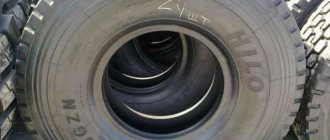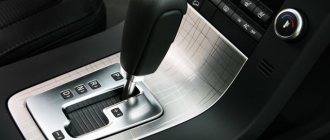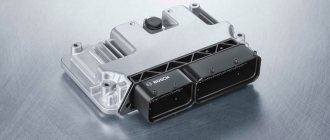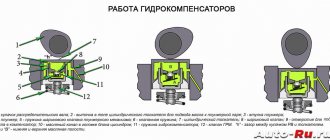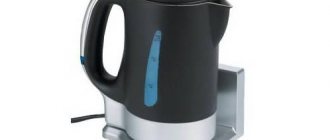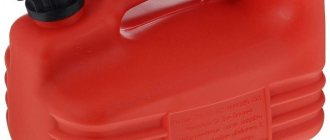Quite often you hear about all-season tires for passenger cars - they are usually bought by thrifty car enthusiasts who do not want to spend money on two sets of tires, one of which will inevitably lie in the garage unused. In addition, such products are preferred by owners of commercial vehicles and special vehicles - tires for them cost a lot of money, while every ruble spent is reflected in the financial results of the enterprise. However, are all-season tires truly versatile? Why then are winter and summer varieties of tires produced?
Some drivers prefer to avoid changing tires every season by using all-season tires.
What is versatility?
The main difference between summer and winter modifications of tires is the chemical composition of the rubber, which determines their density and grip properties at a certain ambient temperature. Accordingly, all-season wheels use chemical compounds that allow them to achieve average parameters that can provide the necessary density in summer and traction on slippery roads in winter. Currently, expensive tire models have also begun to appear on the market, which change their properties when temperatures change - it is quite possible that they are the future, but for now they are rather the exception to the rule. In addition, even the most expensive all-season tires have not yet become a full replacement for wheels adapted to certain conditions.
All-season car tires are also often built on the principle of an asymmetrical layout. This means that their tread is divided into two parts, which have different patterns. Typically, the inner side of all-season tires is designed to facilitate traction on snowy surfaces, for which it is equipped with a rectangular structured tread. However, it is necessary to deal not only with snow, but also with water, which also creates significant interference with driving. Therefore, the outer side of all-season tires with a V-pattern is adapted to drain water through special grooves.
Cordiant All terrain
Cordiant All terrain
Tires from Cordiant are distinguished by excellent grip properties and good durability. The new tread design with an aggressive pattern provides good traction even in the most difficult conditions. The tread pattern is extended to the sidewall. Thanks to the reliable carcass, the tires will last for more than one season.
Water drainage and pollution prevention are provided by special grooves, which are widened in the shoulder area by forty degrees. The tires are made from a new rubber compound using the latest technologies.
Main varieties
It may seem surprising, but all-season tires are not completely identical - they also have their own groups. The most common models are those that are adapted to predominantly summer traffic on roads with satisfactory surface quality. Such all-season tire models allow you to achieve maximum comfort and also contribute to achieving good handling for this category of tires. However, don’t even try to drive them into deep snow or moderate off-road conditions - the car will quickly begin to slip and eventually get stuck.
There are also all-season tires that are designed for high-speed driving in conditions of high humidity - they can be distinguished by their orientation to the V-shaped tread structure. They also cannot cope with snow and do not allow for good cross-country ability, but they can count on safety during heavy rain or moderate icy roads. There are also special all-season tires for SUVs - they can really make your car a universal vehicle, but they have a number of disadvantages:
- Increased noise;
- Seriously increased fuel consumption;
- Accelerated tire wear;
- Deteriorated dynamics;
- Reduced comfort when driving on asphalt.
All-season tire manufacturers
There are many manufacturers worthy of attention on the all-season tire market.
Among them it is worth highlighting:
1. General Tire is a plant located in North Carolina, United States of America. In fact, it is a subsidiary of Continental. Year of foundation: 1915.
The plant produces tires for a wide range of vehicles - passenger cars, medium-sized cars, and trucks.
The brand's products are supplied directly to the assembly lines of many manufacturers - BMW, Ford, Mercedes, Toyota, Nissan and so on.
2. Bridgeston is a Japanese plant, opened back in 1931. It was he who pioneered the creation of radial tires.
In 1988, Bridgeston bought another Firestone plant, considered the second largest in the United States.
The company has earned trust due to its high quality products and excellent performance. This is confirmed by the active use of tires from this manufacturer in Formula 1 racing.
Today the company operates more than 150 factories in almost three dozen countries around the world.
3. Kumcho is a Korean manufacturer of winter, summer and all-season tires.
By the way, all-season tires are produced for different types of driving - comfortable and high-speed.
The well-designed tire pattern of this brand provides excellent grip when driving on any road.
Kumcho has been in business since 1950. Since 1991, the manufacturer has entered the top ten largest tire factories.
The emergence of new developments, renewal of production, research and implementation of new technologies - all this allows the company to be one of the leaders in the tire production field.
POPULAR WITH READERS: What affects the pressure in a car’s tires
Only two Korean factories produce about 35 million tires per year.
The Kumcho company produces tires for racing cars, industrial and agricultural machinery.
4. The GoodYear company is one of the oldest in the tire market.
The foundation of the new brand was laid in 1839, when Charles Goodyear (a famous inventor) succeeded in vulcanizing rubber.
In 1898, the brothers started their own tire manufacturing company. In 1908, the first tires began to be supplied to Ford factories.
In 1985, the first radial tires for aircraft appeared, and in 2005, a tire that could ride even after a puncture was introduced to the market. Today the company's sales are more than $15 billion.
5. Michelin is a French manufacturer focused on producing truly quiet tires.
Tires of this brand can be found for any car and any type. The company was founded in 1889. Permission to manufacture tires was received in 1891. Another 16 years later, the first company appeared abroad (in Turin).
During its operation, Michelin absorbed a dozen smaller tire manufacturers.
For a long time, the company was focused on sports cars, but today tires are produced for a wide variety of equipment - aviation, large-sized, agricultural, and so on.
How to distinguish all-season models?
This will be news to many, but all-season tires do not have a specific designation, unlike winter modifications. This is precisely what is connected with the new requirement set out in the Technical Regulations for the countries of the Customs Union - it requires you to have with you a certificate of compliance with legal requirements, which is presented to the traffic police inspector upon request. It is in the documentation for the tires that there is an indication of all-season use. However, be careful not to fall for the “bureaucratic bait” - some not entirely honest manufacturers certify their products according to the regulations for summer tires, but indicate in the documentation that they “recommend” using them as all-season tires. You should be interested in certification - according to the new rules, all-season models will receive two documents indicating compliance with summer and winter standards.
Using the “all-season” vehicle, you must have certain documents
Of course, there is a certain marking of all-season tires, although it cannot be an official certificate of compliance with current standards. Most often it looks like the inscription “M+S”, which stands for Mud+Snow, that is, mud and snow. In addition, different companies may use their own designations - in particular, Russian manufacturers prefer to indicate the inscription “All Season”. We repeat, no inscriptions on the surface of all-season tires can indicate that they belong to this category - the only satisfactory confirmation is a certificate.
Slat differences
The sipe pattern improves traction on slippery surfaces such as rain, snow, and ice. The more slats, the more sharp edges. And winter tires, as a rule, have more sipes than all-season tires. But the siping also allows the tread to flex more, thereby reducing handling ability (cornering stability) at the expense of greater flexibility. As a compromise, some all-season tires will have more sipes, but with a harder tread compound to reduce distortion. Other all-season tires will have fewer soft-compound sipes.
A good winter tire has a balance of tread sipes and this is what allows it to excel in rain, snow, and ice.
Positive features
The main advantages of all-season tires are expressed in their economy, which was already mentioned at the beginning of the article. You don't have to buy two sets of tires, resulting in immediate cost savings. This is especially important if you do not plan to use the car for a long time before selling it - then buying additional tires will be a truly unnecessary expense. Surprisingly enough, all-season tires usually cost less than specialty tires - the reason for this is the marketing strategy of manufacturers who produce similar products for people who prefer to buy cheap automotive components.
Also, you will not need to queue for tire fitting in the off-season - unless the wear of the wheels reaches a critical value during this period. In addition, testing of all-season tires shows that in mild winters they perform much better than those specialized for extremely cold climates. In such climatic conditions, snow and ice are often replaced by dry asphalt, on which winter tires quickly wear out , worsen the dynamic parameters of the car and increase its noise. It is also worth noting that all-season tires a priori cope better with water when thawing snow and ice.
What to choose - all-season or winter tires?
If you don't know whether to choose all-season or winter tires for your car, you should remember some operational features specific to your region:
- Intensity of machine operation.
- Climatic conditions of the region. Residents of the central part of Sochi are better suited to an all-season tire with a European tread, while Muscovites need tires with checkered knobs.
- The quality of roads and the relationship between different sections play an important role. Studded tires grip the road better and provide good directional stability on snowy and icy surfaces. At the same time, their braking distance is longer, and protruding parts wear out faster on asphalt roads.
- It is necessary to take into account how well municipal services perform their direct responsibilities. In areas with government offices, snow removal vehicles are constantly driving, but residential areas are the last to be cleared.
- Special tires are noisier, so if comfort is important to you, you may not like using winter tires.
- Much depends on how much money you have.
Consider all this data and make the right decision.
Main disadvantages
It’s worth saying right away that all-season tires have many more disadvantages than positive features - this almost always happens when they try to give an item universal properties, preparing it for use in diametrically opposite conditions. That is why it is worth carefully analyzing your situation before deciding to purchase such tires. In order not to start a long discussion, we will immediately say that the disadvantages of all-season tires are manifested in the fact that they work equally satisfactorily under any conditions - approximately “C grade” . That is, in any weather they are inferior to specialized tires that are adapted to specific environmental conditions.
Video about the advantages and disadvantages of all-season tires:
In addition, universal models are developed mainly for measured movement - they are downright dangerous at high speeds, due to which manufacturers sometimes deliberately underestimate the permissible values of dynamic characteristics. All-season tires are also always inferior in cross-country ability to winter and summer modifications, which limits their use in the case of a heavy winter with heavy snowfalls or a rainy summer with wet ground sections of roads. I would also like to point out to people who purchase universal tires for reasons of economy that they will have to purchase the same number of sets per year as if they were using two types of tires. Of course, it was already said above that all-season modifications are a little cheaper, but you need to take into account that you will buy a new set to replace the first one later, when inflation has already increased the cost of all goods, eliminating the advantage you received.
Composite differences
There are certain differences between the composition of a winter tire and an all-season tire.
Winter tires have a specific (almost always softer than other tires) composition. It is designed to improve traction in cold climates. These same components make a winter tire a poor choice for summer use. Conversely, at higher temperatures, winter tires become even softer and distortion in the tread area can lead to poor grip and rapid wear.
Should we buy or not?
The only option for purchasing all-season tires is in mild climates, where the differences between winter and summer are not as noticeable as in northern regions - for example, in subtropical zones. Remember that all-season tires were originally developed for warm countries such as the USA, France, Spain, and only then spread throughout the world. If you plan to use them in harsh winters, you should avoid such a purchase for safety reasons - in snow, ice and other similar conditions, handling and cross-country ability will leave much to be desired.
What are all-season tires? Advantages and disadvantages
People who like to save money often buy all-season tires. They believe that there is no point in spending money on a second set of tires (winter or summer) - why is it necessary if they will still be lying in the garage. Universal tires are also used by manufacturers of various specialized equipment, since installing seasonal sets will cost them a pretty penny. However, not all so simple. Would people really change summer tires for winter ones if they could install all-season tires and not spend any more money? This is what we have to figure out.
How are they universal?
Winter and summer tires differ in the chemical composition of the rubber, which dramatically affects the density and nature of grip in different temperature conditions.
Based on these parameters, all-season tires average out the values that will provide smooth grip on the road in the summer and firm grip on the road in the winter. All-season vehicles of the new generation are so advanced that they can absolutely radically change their parameters for the benefit of the driver, depending on the temperatures. That is, it can “transform” from summer tires to winter tires, and vice versa. But, of course, it’s a bit expensive. Despite all the uniqueness and practicality of these hi-tech wheels, they are still inferior to seasonal tires. All-season tires are assembled according to the principle of asymmetry. In simple terms, the tread is divided into 2 equal parts, which represent two different patterns. The inner shell performs the function of protecting the tire from snow in winter - the tread, which is built in the form of a rectangle, is responsible for this. But, unfortunately, the matter is not limited to snow - on the road, water is a fairly big danger, which makes the car uncontrollable at high speed. For this purpose, external tire protection in the shape of the letter V was created. It removes water through special channels.
Main types of all-season tires
All-season tires, like any other part of any car, although they are similar to each other, are never absolutely identical. It can also be divided into several subtypes. The most popular are all-season vehicles, which are designed for good summer roads. They are responsible for comfort during the trip, as well as smooth handling of the car. But it is worth noting that if you decide to drive them into a village, or into a huge pile of snow, you will not be happy - the car will slip.
There is another interesting type of all-season tires. Its purpose is ultra-high-speed driving on wet roads. It is very easy to recognize such tires - watch for the V-shaped structure. They, like the previous ones, cannot cope with snow, but in heavy rain and light ice you will feel safe. There are also all-season tires for SUVs. Their properties will allow you to turn your car into a truly universal transport, but they also have a lot of disadvantages:
- - They make a lot of noise.
- — The car consumes a lot of gasoline.
- — Tires wear out quickly.
- — Dynamism is falling.
- — When you move on smooth asphalt, the level of comfort drops. This is due to the fact that the tires are designed specifically for off-road use.
How do you know if you have all-season tires?
The main difference between all-season tires and winter tires is that they do not have any specific marks. Therefore, according to the new requirements that were regulated in the Technical Regulations for countries that are members of the Customs Union, the driver must have with him a certificate confirming compliance with the requirements of the country’s legislation, which he will present to traffic cops upon first request. This document specifies that tires belong to a specific type. Here you need to be careful, because some manufacturers actually sell you summer tires, but in the instructions for use they write that they can also be used as off-season tires. First of all, you must check the documents. All-season tires come with two certificates that confirm that their parameters comply with both summer and winter conditions.
Of course, specific features of wheels still exist, but they do not guarantee that all the necessary standards are met. Basically, these are the letters S+M. These are abbreviations. M – mud, S – snow. The first is mud, the second is snow. Some companies also add flavor - Russians, for example, label tires such as All Season. We remind you once again, no matter what is written on the rubber, the main evidence that it belongs to a certain type of tire is the documents.
Advantages of off-season tires
The most important advantage of off-season tires is the opportunity to save on them. You won't need to spend money on two different sets of tires that are really expensive.
This is suitable for those people who plan to resell cars - if you won’t drive the car for a long time, then what’s the point of wasting money down the drain. It is noteworthy that all-season tires cost less than summer and winter tires. This is a special move by manufacturers to ensure that people who love cheap parts choose their company.
Disadvantages of all-season
Unfortunately, there are much more negative sides than positive ones. Because tires try to “please” both warm conditions and cold conditions, they normally don’t please either. Both there and there they work with a C grade. No all-season wheels will ever be able to beat studded winter tires or summer tires in their field.
It is also impossible to accelerate on them - they are designed for driving at a measured speed. In real winter conditions - with heavy snowfall or total icy conditions - their passability on the roads drops greatly and you have to drive very slowly so as not to crash into anything.
